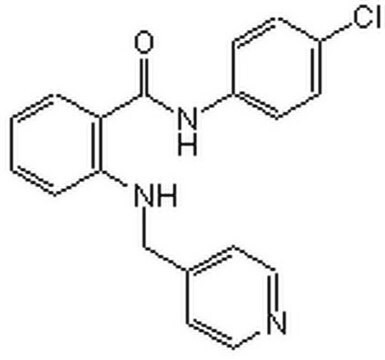685070
Poly-[(9,9-dioctylfluorenyl-2,7-diyl)-co-bithiophen]
99.9%
Synonym(e):
F8T2, Poly-(9,9-dioctylfluoren-alt-bithiophen), Poly-[[2,2′-bithiophen]-5,5′-diyl-(9,9-dioctyl-9H-fluoren-2,7-diyl)]
About This Item
Empfohlene Produkte
Qualitätsniveau
Assay
99.9%
Form
powder
Mol-Gew.
average Mn >20,000
Fluoreszenz
λex 400 nm; λem 497 nm in chloroform (at Mn = 20,000)
Halbleitereigenschaften
P-type (mobility=5×10−3 cm2/V·s)
Verwandte Kategorien
Allgemeine Beschreibung
Polymer is end-capped with 3,5-dimethylbenzene.
Anwendung
Lagerklassenschlüssel
11 - Combustible Solids
WGK
WGK 3
Flammpunkt (°F)
Not applicable
Flammpunkt (°C)
Not applicable
Hier finden Sie alle aktuellen Versionen:
Besitzen Sie dieses Produkt bereits?
In der Dokumentenbibliothek finden Sie die Dokumentation zu den Produkten, die Sie kürzlich erworben haben.
Artikel
The development of high-performance conjugated organic molecules and polymers has received widespread attention in industrial and academic research.
Organic photovoltaics (OPVs) represent a low-cost, lightweight, and scalable alternative to conventional solar cells. While significant progress has been made in the development of conventional bulk heterojunction cells, new approaches are required to achieve the performance and stability necessary to enable commercially successful OPVs.
There is widespread demand for thin, lightweight, and flexible electronic devices such as displays, sensors, actuators, and radio-frequency identification tags (RFIDs). Flexibility is necessary for scalability, portability, and mechanical robustness.
Unser Team von Wissenschaftlern verfügt über Erfahrung in allen Forschungsbereichen einschließlich Life Science, Materialwissenschaften, chemischer Synthese, Chromatographie, Analytik und vielen mehr..
Setzen Sie sich mit dem technischen Dienst in Verbindung.![Poly-[(9,9-di-n-octylfluorenyl-2,7-diyl)-alt-(benzo[2,1,3]thiadiazol-4,8-diyl)] average Mn ≤25000](/deepweb/assets/sigmaaldrich/product/structures/428/661/1c4ebb98-9d51-48c0-96c7-e556ca425aa4/640/1c4ebb98-9d51-48c0-96c7-e556ca425aa4.png)







